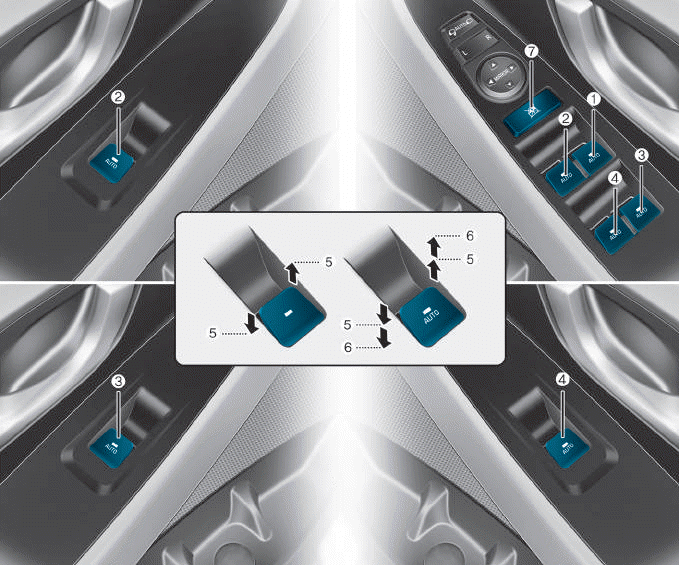Hyundai i-30: Charging System / Description and operation
Hyundai i30 (PD) 2018-2025 Service Manual / Engine Electrical System / Charging System / Description and operation
| Description |
The charging system includes a battery, an alternator with a built-in regulator,
and the charging indicator light and wire.
The Alternator has eight built-in diodes, each rectifying AC current to DC current.
Therefore, DC current appears at alternator "B" terminal.
In addition, the charging voltage of this alternator is regulated by the battery
voltage detection system.
The main components of the alternator are the rotor, stator, rectifier, capacitor
brushes, bearings and V-ribbed belt pulley. The brush holder contains a built-in
electronic voltage regulator.
| Alternator Management System |
Alternator management system controls the charging voltage set point in order
to improve fuel economy, manage alternator load under various operating conditions,
keep the battery charged, and protect the battery from over-charging. ECM controls
generating voltage by duty cycle (charging control, discharging control, normal
control) based on the battery conditions and vehicle operating conditions.
The system conducts discharging control when accelerating a vehicle. Vehicle
reduces an alternator load and consumes an electric power form a battery.
The system conducts charging control when decelerating a vehicle. Vehicle increases
an alternator load and charges a battery.
 Components and components location
Components and components location
Components
1. ECM
2. Battery
3. Alternator
4. Starter
5. Instrument
Cluster
6. Ignition switch or start/stop button
7...
Other information:
Hyundai i30 (PD) 2018-2025 Owner's Manual: Sunshade
To open the sunshade, pull the sunroof control lever backward (1) to the first detent position. To close the sunshade when the sunroof glass is closed, push the sunroof control lever forward (2). To stop the sunroof movement at any point, push the sunroof control lever either forward or backward momentarily...
Hyundai i30 (PD) 2018-2025 Owner's Manual: Seat warmers and air ventilation seats
Front seat warmers Seat warmers are provided to warm the seats during cold weather. WARNING The seat warmers can cause a SERIOUS BURN, even at low temperatures and especially if used for long periods of time. Passengers must be able to feel if the seat is becoming too warm so they can turn it off, if needed...
Categories
- Manuals Home
- 3rd Generation i30 Owners Manual
- 3rd Generation i30 Service Manual
- To activate the ISG system
- Cruise control
- Scheduled maintenance services
- New on site
- Most important about car
Power windows

(1) Driver’s door power window
switch
(2) Front passenger’s door power
window switch
(3) Rear door (right) power window
switch
(4) Rear door (left) power window
switch
(5) Window opening and closing
(6) Automatic power window
(7) Power window lock switch
Copyright © 2025 www.hi30.net

